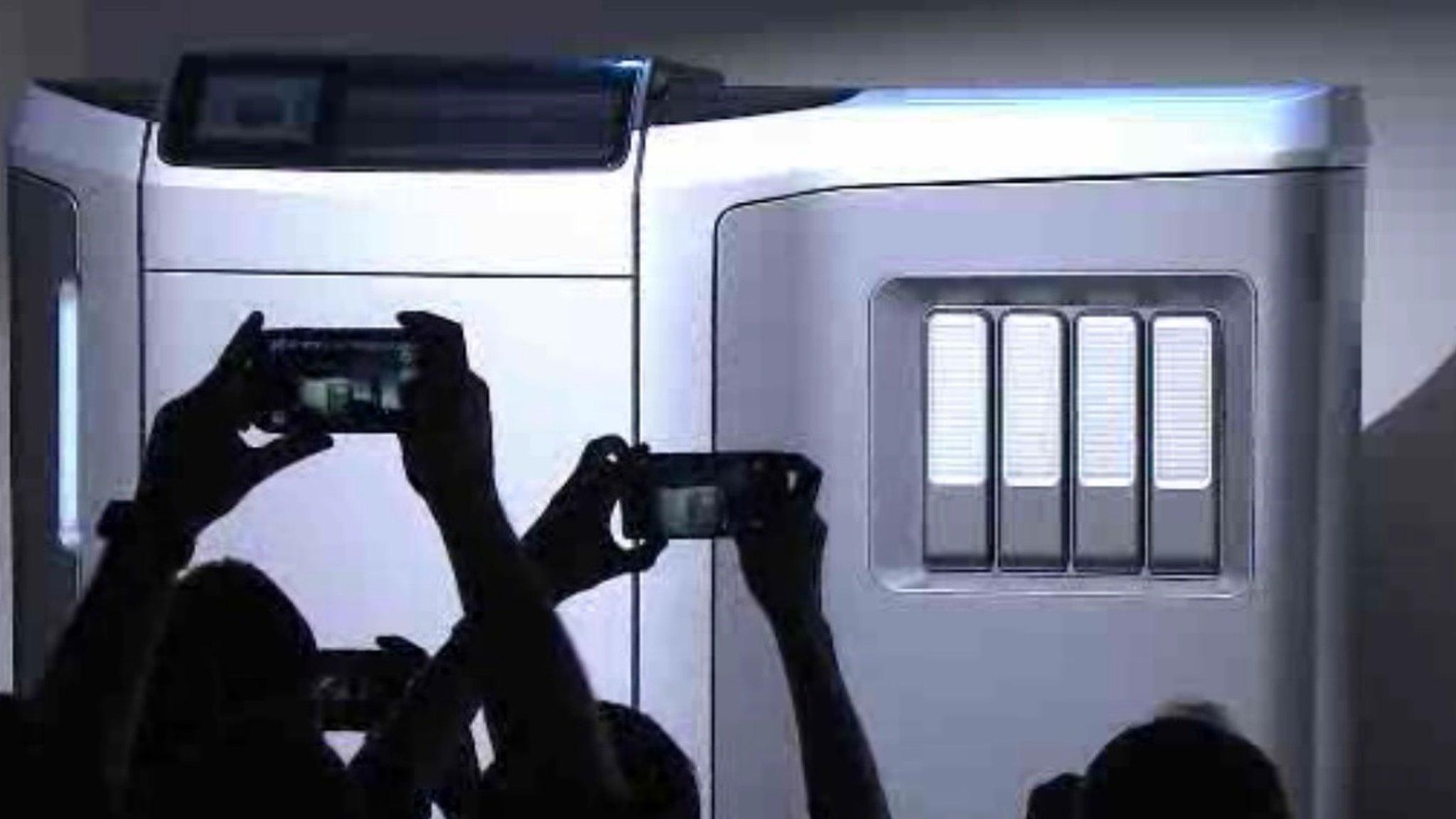HP reveals high-speed 3D printers with jet fusion tech
- Published
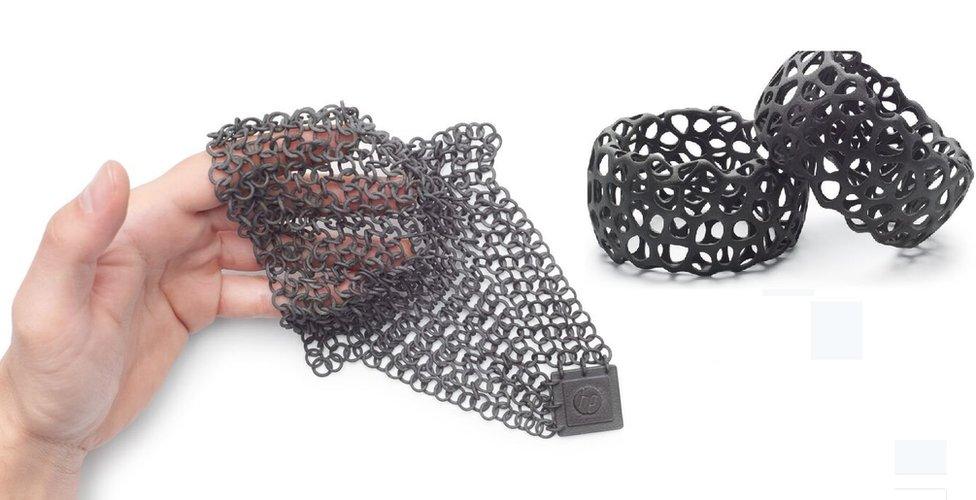
HP says its printers can make highly detailed objects at high speed
HP has unveiled two high-end 3D printers, which it says are up to 10 times faster and cheaper to run than rival systems.
The firm adds that the "multi jet fusion" technology, external it has developed means its machines can build "superior quality" prototypes.
One expert said the innovation had the potential to be "revolutionary".
But, at present, HP's machines only print in one colour and one material, which will limit their appeal.
The company is hoping to challenge Stratasys and 3D Systems - the two leaders in the 3D-printing industry.
"HP's printers can produce really high-resolution parts at a cost and a speed that blows the competition out of the water," commented Joe Kempton, an analyst at the tech consultancy Canalys.
"Its technology really is a huge step forward and a game-changer.
"What its competitors have, at the moment, is a wider range of materials and the ability to print in multi-colour. But in the long term, HP should be able to close that gap."
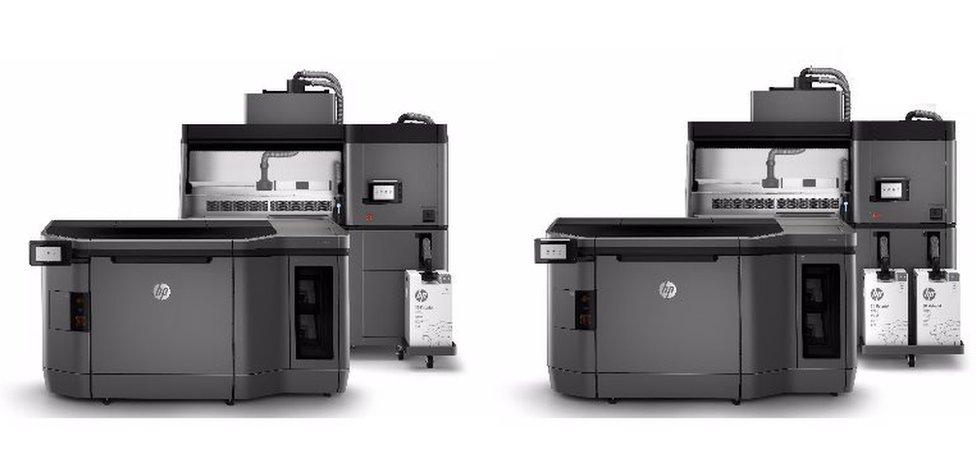
HP says it expects its Jet Fusion 3D 3200 and Jet Fusion 3D 4200 to be "disruptive"
Monochrome prints
Unlike many high-end 3D printers, HP's technology does not use a laser to administer its print material.
Instead, it lays down a thin layer of powder before using a thermal "inkjet" array to introduce an added chemical agent that fuses the material together.
This is repeated layer-by-layer until the object is complete.
The company says its machines can target 340 million points - called volumetric pixels (voxels) - every second.
The caveat is that its first printers to use the tech can only produce goods made from a monochrome thermoplastic.
Competing machines can build models out of metals, various types of plastics, waxes and other materials - sometimes combining different elements together - as well as different colours.
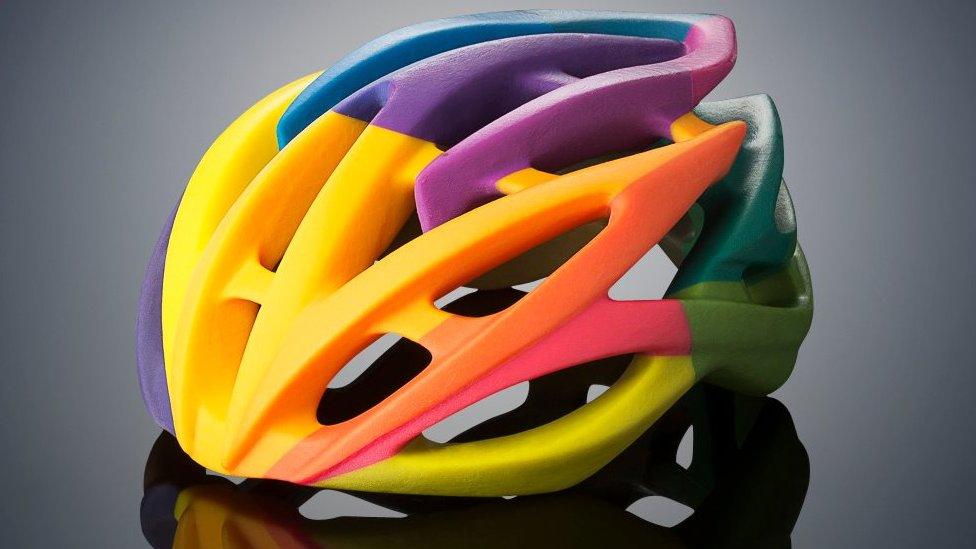
Stratasys makes a 3D printer that can create multi-coloured objects
More materials
HP's entry-level model is the Jet Fusion 3D 3200, which is about the same size as a washing machine.
It will cost $130,000 (£89,750) when it is released next year. The firm is pitching it as a way to make prototypes.
Its higher-end Jet Fusion 3D 4200 - whose price has not yet been announced - is targeted at customers who also want to be able to turn around "same-day" small-scale production runs.
HP's head of imaging and printing Stephen Nigro told the BBC his company wanted to "move 3D printing from prototyping to production".
He added that future printers would also be able to make ceramic-based objects and multi-coloured items.

HP says its jet fusion technology can be adapted to make ceramic structures
Leapfrog tech
Demand for 3D printers is growing but they remain a relatively niche product category.
About 245,000 models were sold in 2015, according to the research firm Gartner.
It forecasts the number will grow to 5.6 million in 2019, although much of that growth will be driven by models costing $2,500 or less.
HP announced it was going to enter the 3D-printing market in 2014, but said it did not want to release a product until it had a "significant" market advantage.
"Competitors have had a significant amount of time to try and adapt and advance their own research," said Mr Kempton.
"However, at the moment there's nothing on the market that is comparable in terms of speed and cost to HP's printers".
- Published7 January 2016
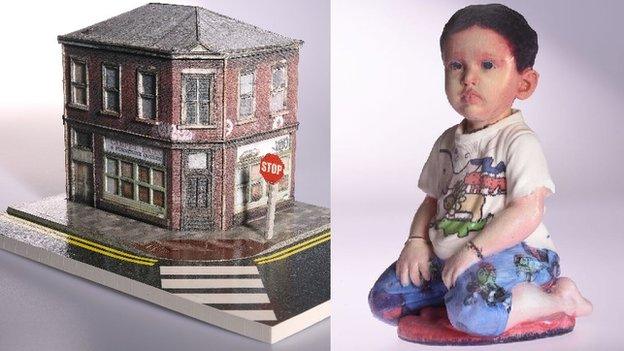
- Published6 April 2016

- Published29 October 2014
